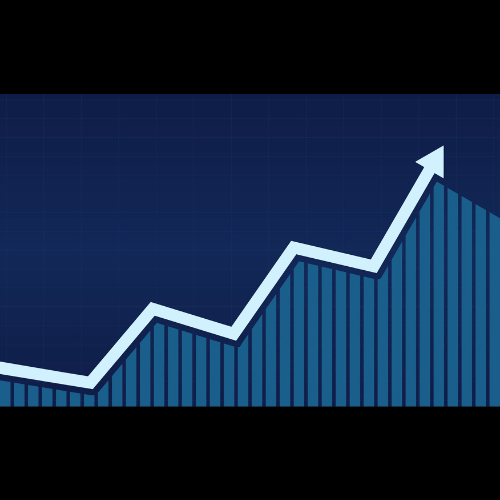Identifying small-cap growth stocks with the potential for substantial growth over the next decade requires a focus on industries expected to experience significant expansion and innovation. Here are some hyper-growth sectors and promising small-cap stocks within them:
1. Artificial Intelligence (AI) and Machine Learning
Why:
AI is transforming numerous industries, from healthcare to finance, and its applications are continually expanding. The growth in AI is driven by advancements in data analytics, processing power, and machine learning algorithms.
Top Stocks:
BigBear.ai Holdings (BBAI): Specializes in AI-driven analytics and cyber solutions for defense, intelligence, and commercial markets. Their AI technology enhances decision-making and prediction capabilities across industries.
Veritone (VERI): Provides AI operating systems and solutions that help organizations process and analyze unstructured data such as audio, video, and text. Veritone is focused on AI applications across media, legal, and government sectors.
2. Biotechnology and Genomics
Why:
Advances in personalized medicine and gene editing are leading to groundbreaking treatments and diagnostics. Innovations in genomics and biotechnology are paving the way for new therapies and improving patient outcomes.
Top Stocks:
CRISPR Therapeutics (CRSP): A leader in gene editing technology, CRISPR Therapeutics is developing transformative treatments for genetic diseases using CRISPR/Cas9 technology.
Beam Therapeutics (BEAM): Specializes in precision genetic medicines using base editing, a novel technology that allows precise editing of individual base pairs in DNA.
3. Robotics
Why:
Robotics is increasingly being integrated into manufacturing, healthcare, and service industries, driving efficiency and innovation. Advances in automation and AI are making robots more capable and adaptable.
Top Stocks:
Serve Robotics (SERV): Develops autonomous delivery robots designed for sidewalk delivery, focusing on improving the efficiency and safety of last-mile delivery in urban areas.
Nauticus Robotics (KITT): Provides marine robotics services and technology, aiming to revolutionize ocean exploration and underwater operations with advanced robotic systems.
4. Financial Technology (FinTech)
Why:
FinTech is revolutionizing how we manage money, make payments, and access financial services. Innovations in digital banking, payments, and blockchain technology are reshaping the financial landscape.
Top Stocks:
Marqeta (MQ): Provides a card issuing platform that powers modern payment solutions, supporting digital wallets and virtual cards for businesses and consumers.
Upstart Holdings (UPST): Utilizes AI to improve access to credit by predicting loan risks more accurately than traditional credit scoring methods.
5. Cybersecurity
Why:
As digital threats increase, the need for robust cybersecurity solutions is more critical than ever. Companies are investing in cybersecurity to protect sensitive data and maintain trust in digital systems.
Top Stocks:
SentinelOne (S): Leverages AI for endpoint protection, offering a cybersecurity platform that autonomously prevents, detects, and responds to threats in real time.
Tenable Holdings (TENB): Provides cybersecurity solutions for identifying and addressing vulnerabilities across IT infrastructures, helping organizations manage their cybersecurity risks.
6. Space Exploration and Satellite Technology
Why:
The commercialization of space and satellite technology is opening new frontiers for communication, research, and transportation. Innovations in rocket technology and satellite deployment are making space more accessible.
Top Stocks:
Spire Global (SPIR): Provides space-based data and analytics through a network of nanosatellites, offering insights for maritime, aviation, and weather sectors. Aims to enhance decision-making with real-time and predictive analytics.
Rocket Lab USA (RKLB): Provides comprehensive space systems and launch services, enabling the deployment of small satellites for commercial and government customers.
Investment Considerations
Risk Assessment: Small-cap stocks are inherently more volatile and risky. It’s essential to evaluate each company’s financial health, management team, and competitive position.
Market Trends: Keep an eye on regulatory changes, technological advancements, and shifts in consumer behavior that could impact these industries.
Diversification: Spread investments across multiple industries and companies to mitigate risk.
Long-term Vision: Consider the company’s potential for sustainable growth and its ability to adapt to changes over time.
Conclusion
While these industries and companies show promise, predicting the best small-cap growth stocks over the next decade involves uncertainty and requires careful analysis and due diligence. You should continuously monitor industry trends and company performance to make informed decisions.
by Steve Macalbry
Senior Editor,
BestGrowthStocks.Com
Disclaimer: The author of this article is not a licensed financial advisor. This article is intended for informational purposes only. It should not be considered financial or investment advice. We do not hold any form of equity in the securities mentioned in this article. Always consult with a certified financial professional before making any financial decisions. Growth stocks carry a high degree of risk, and you could lose your entire investment.







